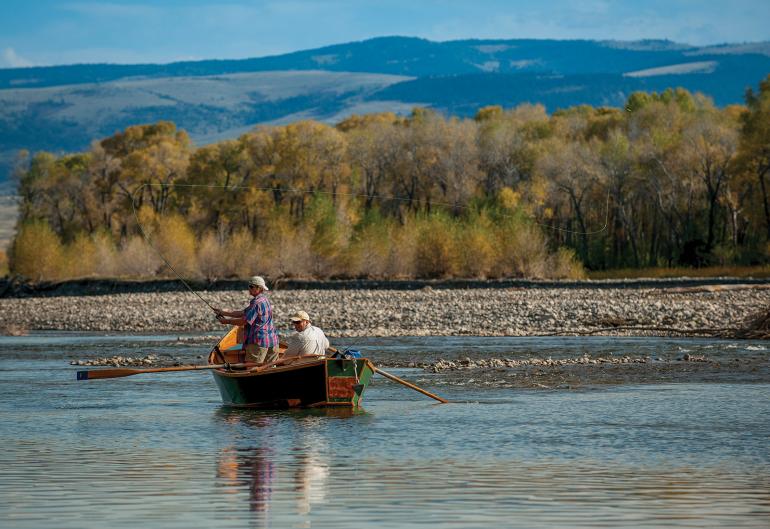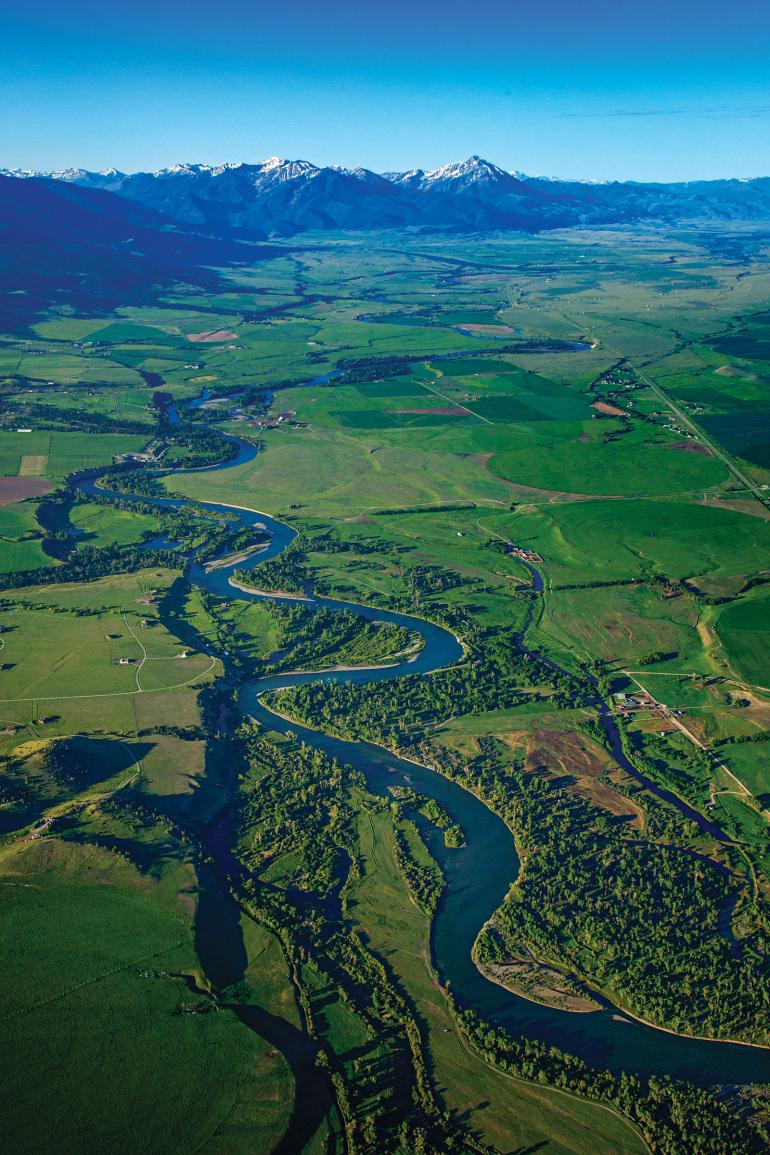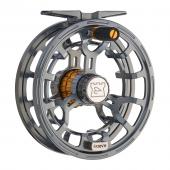Upper Yellowstone
A trip through paradise.
The Yellowstone River in Paradise Valley, flowing from Gardiner to Livingston, is one of Montana’s most iconic trout fisheries. Flowing in the shadow of the towering Absaroka Range to the east and the stunning Gallatin Range to the west, this meandering river is as fishy as it is beautiful. Although the Yellowstone gets plenty of pressure, it holds up remarkably well. It gathers from the snowmelt of Younts Peak in the southern Absarokas southeast of Yellowstone Park in Wyoming, and flows about 700 undammed miles to join the Missouri just east of the North Dakota border. The trout-rich section in Paradise Valley accounts for about 80 of those miles.
Access
Access is plentiful on this upper section of the Yellowstone. There are 20 official Fishing Access Sites (FAS) from Yellowstone’s northern border through Livingston city limits. The stretch above Yankee Jim Canyon holds fast pocket-water that is also fantastic stonefly habitat. Though not the easiest to wade or float, this stretch offers competent anglers some of the year’s best dry-fly fishing during early summer. Downstream from the canyon, floating and wading are less treacherous. With put-ins and take-outs every few miles, this wide river usually has room to accommodate all recreationists.
Flows
The Yellowstone in the valley generally flows between 1,000 and 2,000cfs, but being a freestone river surrounded by mountains, it’s very susceptible to weather-related fluctuations. The river should be avoided during peak runoff, when flows often exceed 20,000cfs, but it usually becomes fishable again after flows drop below 10,000cfs. Post-runoff, it’s stonefly season, eventually yielding to hopper season by August, and the Yellowstone is one of Montana’s best hopper rivers. Plugs of mud flowing downstream from the Lamar River in the Park often impact the clarity of the Yellowstone in the valley, so paying attention to the former’s flows can give you an idea of what to expect. In 2016, thousands of whitefish washed up on the Yellowstone’s banks revealing one of the unfortunate side-effects of low flows in late summer. The culprit was determined to be Proliferative Kidney Disease (PKD), which spreads easily in excessively warm water. PKD returned in 2017, albeit with a smaller impact owing to adequate snowpack and more moderate summer temperatures, but the moral is this: give the ’Stone some space when water temps exceed 68 degrees.
When to Go
The Yellowstone River has some great seasons, and a couple to avoid. Starting in March, the ice thaws to a point when midge and blue-winged olive hatches offer excellent fishing. The river’s biggest bug event soon follows: the Mother’s Day Caddis Hatch, a time when dusty tan wings blanket the surface of the water as trout feast in the foam eddies.
After the smorgasbord, runoff sets in, sometimes lasting until July. Salmonfly and goldenstone hatches occur early- to mid-summer, followed by fantastic hopper fishing into September. This is also the time of year when low flows and high temperatures can cause hoot-owl restrictions (closures to fishing from 2pm to midnight).
When autumn’s mild temps return, streamer fishing for the river’s ornery brown trout is fantastic before the spawn. Winter fishing is not out of the question, either. After a spell of mild temperatures, or in hot springs’ adjacent sections and spring creeks, the river can remain ice-free. In winter especially, however, be weary of the high winds for which Paradise Valley is notorious.
Fish
Brown, rainbow, and cutthroat trout, as well as mountain whitefish, all fill nets on this stretch. This is the rare river where native cutthroat still make up a significant portion of the catch. (It’s Yellowstone cutthroat in the Yellowstone River drainage, and westslope cutthroat everywhere else in Montana.) These beautiful fish love to surface-feed, making stonefly and hopper seasons extra fun.
Row vs. Wade
Both wade-fishing and float-fishing are possible on the Yellowstone, although floating is often preferred. Floating anglers can cover more water while pounding the banks and foam eddies with streamers and dry flies. Popular floats include the so-called “bird float” from Grey Owl FAS to Mallard’s Rest FAS, and the Livingston “town float” from Carter’s Bridge FAS to Mayor’s Landing FAS. Wade fishing is productive around the many access sites, as well. Beware of Yankee Jim Canyon: only expert rowers should even consider floating this portion, and wading is discouraged.
Regs
From the Park boundary to Pine Creek Bridge, it’s catch-and-release for cutthroat trout. Other fish species have special bag limits, which should always be referenced in FWP’s regulations.
Getting There
From Bozeman, take I-90 east for about 25 miles to the Livingston exit. Head south on U.S. Hwy. 89 where the river follows the road all the way to Yellowstone Park.
Author of The Flyfisher’s Guide to Southwest Montana’s Mountain Lakes, Josh Bergan prefers callibaetis to salmonflies.











